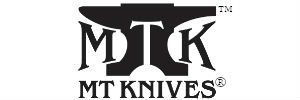Last week I worked on a couple of new neck knife blade profiles. I’ve been thinking about the idea of a knife that’s very small, lightweight, all function, with no conventional handle.
People ask me all the time if I can build a knife like this picture they saw online, or a design they have in their heads. I’d like every one of those people that want me to do a custom profile for them to do this exercise: draw the profile of the knife that you have in mind. Draw it to scale, and draw it several times to get it just the way you want it. And then cut it out and tape it or glue it to a piece of cardboard, and cut out the profile in the cardboard and play with it for a while. See if it fits your hand or it really feels functional. Think about what it will weigh if it’s made from .140 inch thick, high carbon steel.
Try cutting something with it, and think about what the blade dynamic would be like. If it’s a thick, deep bellied knife, like a skinning knife, how’s it going to perform for sliding into packages, or cutting open bags, or slicing a quick snack? Think about the finger guard, and where you place your thumb. Will you be able to keep a good grip on it when you’re pushing and levering on something to cut?
One thing people don’t realize about a knife is how much even one millimeter’s difference can make in the look and the feel and the function of the knife. One tiny change in the way that the blade’s tip drops or curves is a big difference in how it’s ground, sharpened, and used from day to day.
Someday I’ll have to cover all the terms that are used in describing a blade’s profile. Drop-point, clip-point, Hawk’s bill, tanto, Wharncliffe, sheepsfoot… All the terms and categorizations are just ways of describing designs that have evolved over time for different purposes in different parts of the world. In my opinion, there’s really not any true “new” designs. There are only so many, and some knifemaker, somewhere, has probably used it before. The key is to find the design that works the best for the range of situations you’ll be using it for.
Patrick Roehrman


I love all three of those blade designs, they look amazing. I’m not sure I understand how they would be put to use. “All function” and “no handle” seem at odds to me. A finger ring, say on the end of the handle, would be fantastic for maintaining a secure grip on the knife in most any conditions without the need for friction tape, which I end up adding to basically every non-folding knife I own that I actually intend to use.